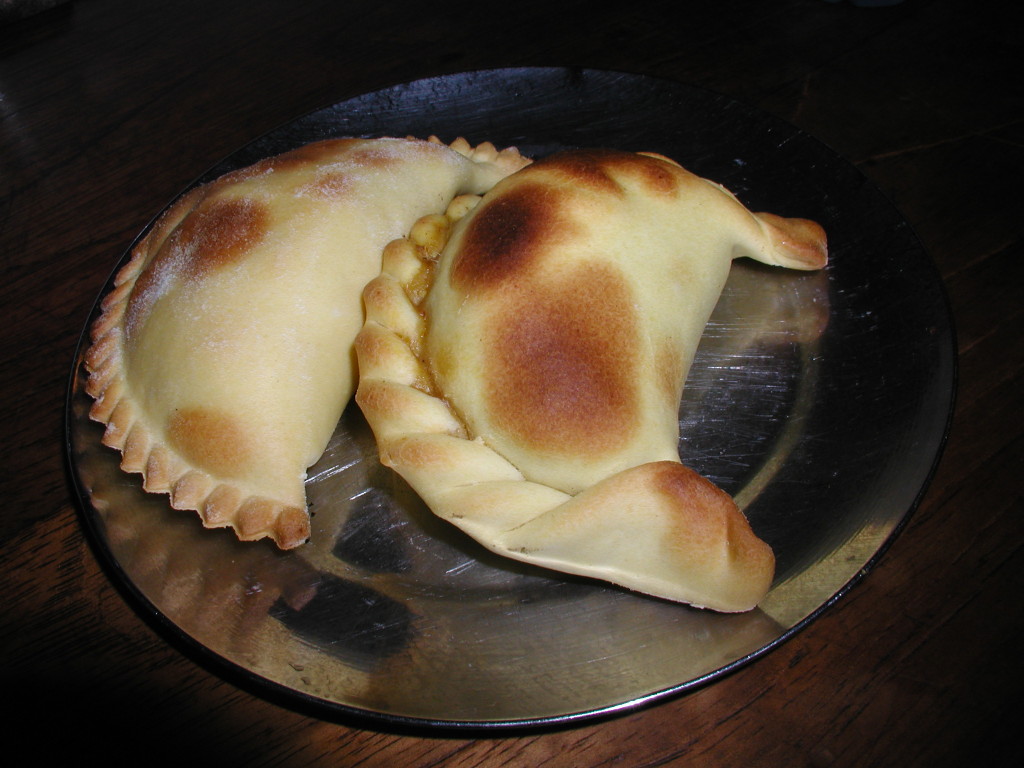On Sunday supplement
Food and Wine
Argentina is known far and wide for its beef, and aficionados will argue the fine points of cooking and presentation at any asado. Yet probably no other item from the country’s cuisine engenders quite so much passion as the defense of one’s favorite empanada. Arguments range from “my grandmother made criollas that your grandmother wasn’t fit to crimp” to “my favorite place has the most perfect… baked, fried, cut beef or ground, potatoes, olives, eggs, onions, or raisins, included or not… and I’ll take you there and prove it.” Culinary historians carry on about the origin of this bread enveloped pastry, tracing it back to Galicia in Spain, or perhaps to ancient Persia. To hear some of them natter about the subject, we’d need carbon dating to settle on their origin.
It should come as no surprise to find that every culture on the planet has some similar dish – from Middle Eastern fatays, to Asian pot-stickers, to the Scandinavian or Cornish pasty, to a classic savory turnover from France or an Indian samosa. Yet, there is something uniquely Latin American about the empanada. The dough is not unique in the pastry world, most often made from simple white flour, eggs, water, and lard or suet. The fillings range from beef to pork to chicken to fish to vegetables. The spices vary in accordance with local favorites throughout South and Central America and the Caribbean. The additions are too numerous to consider. Yet there’s something about them, when one picks them up, hot and juicy, that fits the Latin culture.
Argentines would argue that theirs are the best. Certainly there is a wide variety of regional styles, thankfully most of them are available here in Buenos Aires, including examples from neighboring countries, removing the need to hop on a colectivo and travel province by province to sample them. Here we can find garlicky, spicy catamarqueñas, chock-full of potatoes, green onion packed salteñas, (not to be confused with the Bolivian salteña version which is a whole different thing), white onion filled sanjuaninos, touches of tomato and various cheeses in the tucumanas, salmon and tuna from the shore or packed into Chilean styles, lamb and wild mushrooms from Patagonia, pumpkin based Venezuelans, and finely ground goat or lamb meat in the arabe styles. Cheese filled, corn filled, vegetable laden, or a wide variety of meats abound. Local shops may offer specialty versions, and it is worth seeking out something like smoky pancetta and plum, or spicy sausage and green onion, or even an Italian knock-off like a napolitana.
I’m going to guess that most people aren’t going to take the time to make and form their own shortcrust or puff pastry, and there are plenty of tapas available in any supermarket that work just fine. Here’s one of our favorite, lighter fillings that never fails to wow visiting friends.
Patagonian Style Mushroom Filling
400 grams mixed mushrooms
1 small onion, chopped
1 small chili pepper, chopped
25 ml olive oil
25 grams flour
120 ml fat free or reduced fat milk
salt, pepper
Smoke flavoring (or use smoked salt in place of the plain salt above)
oil
Put the oil and flour in saucepan over low heat, and cook, stirring occasionally, for about 10 minutes. Warm the milk (a minute in the microwave is just fine) and add to the mixture, turn the heat up to medium and cook, stirring continuously, until it thickens. Set aside.. Saute mushrooms, chili and onion in oil until browned. Combine with the white sauce (bechamel). Add a couple of drops of liquid smoke flavoring and then season to taste. Let cool before using. Place a heaping tablespoon onto each empanada tapa and then fold over and crimp to seal. Bake in a 180°C oven for 15 minutes until puffed and golden brown.
A series of recipes and articles that I started writing for the Buenos Aires Herald Sunday supplement, Food & Wine section, at the beginning of 2012. My original proposal to them was to take local favorite dishes and classics and lighten them up for modern day sensibilities. We’re not talking spa or diet recipes, but at the very least, making them healthier in content, particularly salt, fat and portion size. As time went by, that morphed into a recipe column that, while emphasizing food that is relatively “good for you”, wasn’t necessarily focused on local cuisine. At the beginning of 2013 I decided to stop writing for them over some administrative issues, but it was fun while it lasted.
